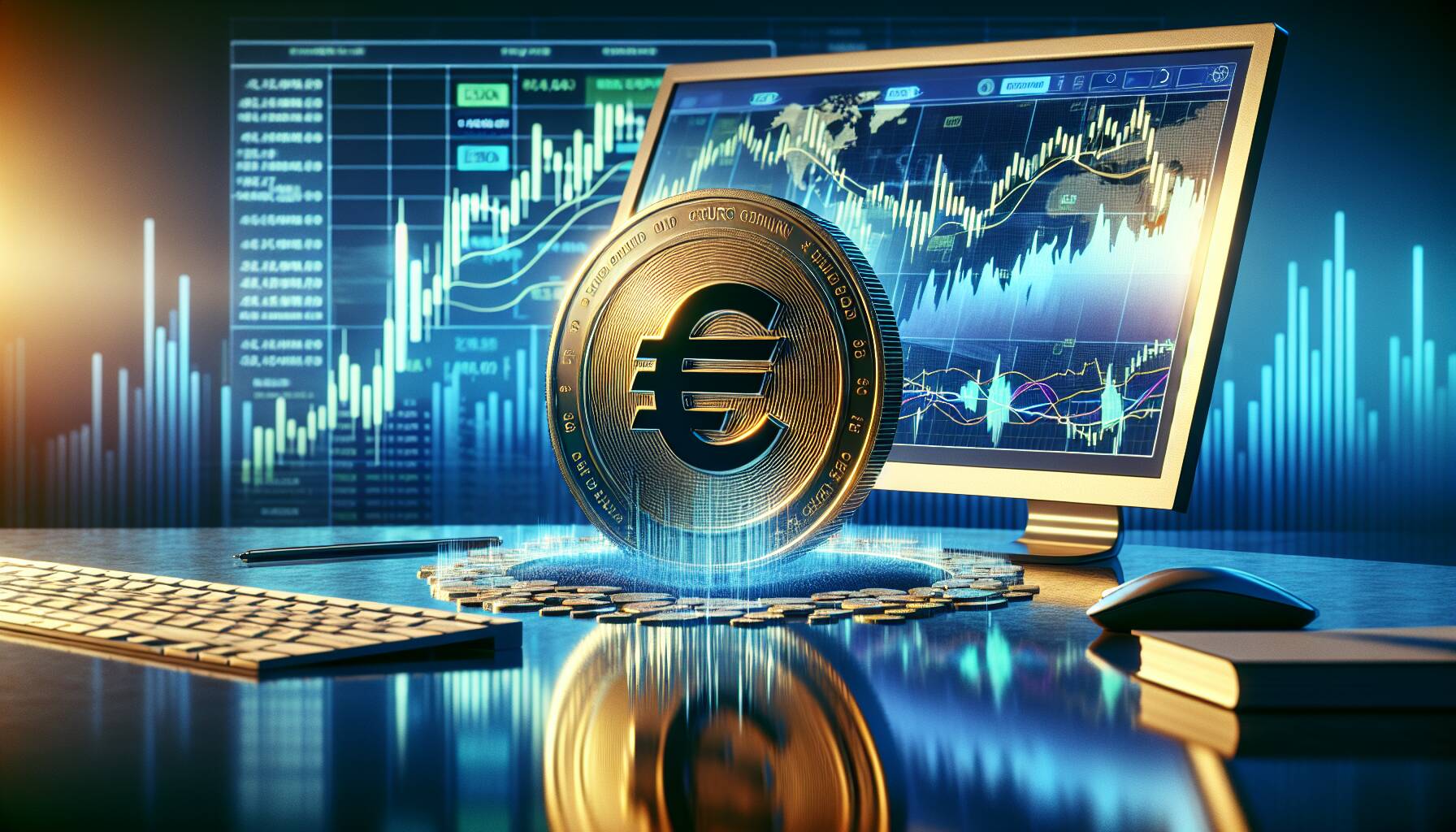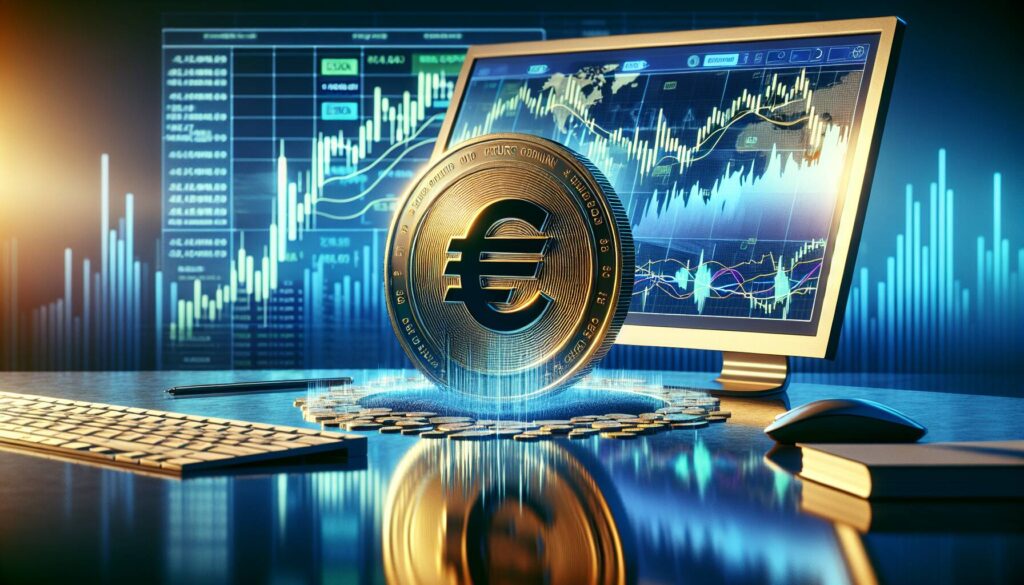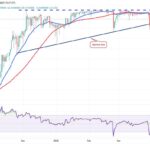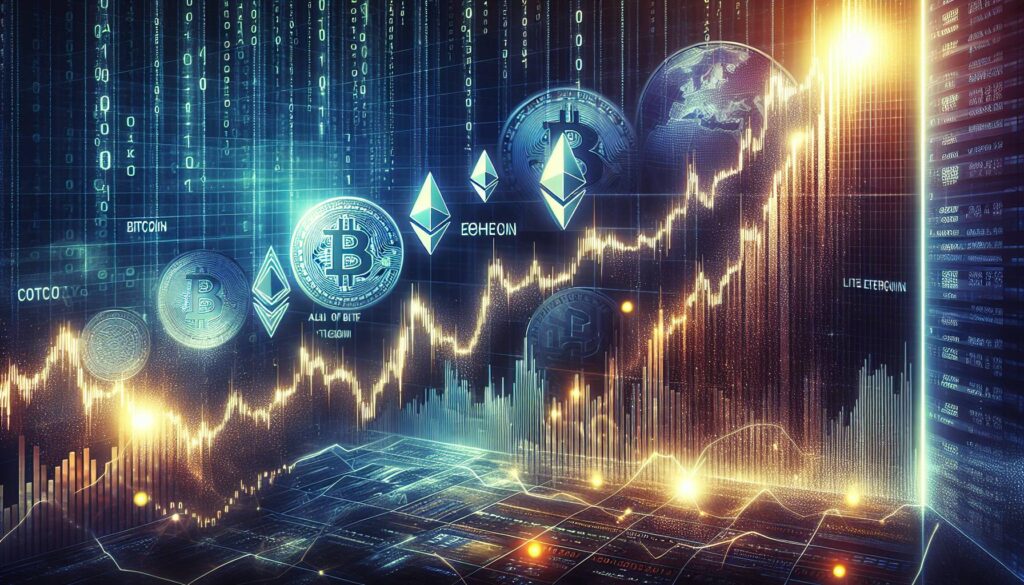In a notable development within the cryptocurrency market, Circle’s euro-backed stablecoin, EURC, has reached an unprecedented supply of 217 million tokens, a staggering 43% increase over the past month. This surge comes amidst growing trade tensions in the U.S. and a depreciating dollar, which appear to be driving demand for euro-denominated digital assets. Currently valued at approximately $246 million, EURC stands as the largest euro stablecoin available, although it remains significantly behind its dollar-pegged counterparts, which comprise 99% of the stablecoin landscape.
Most of the EURC tokens, about 112 million, are circulating on the Ethereum network, reflecting a 35% growth, while the Solana network has seen a remarkable 75% increase, bringing its total to 70 million tokens. Additionally, Base, an Ethereum layer-2 solution by Coinbase, has experienced a 30% rise in EURC supply, reaching 30 million tokens. Such growth has spurred a notable uptick in on-chain activity, with active addresses rising 66% to 22,000 and monthly transfer volume climbing over $2.5 billion—a 47% month-over-month increase—according to RWA.xyz data.
“The rapid increase in volume came amidst mounting concerns about the future of U.S. dollar primacy and the threat of a U.S. recession as markets braced for Trump’s planned ‘Liberation Day’ in April,” reported Xapo Bank.
The current economic climate seems to be pushing investors towards diversifying into euro-denominated digital assets. Notably, Euro deposit volumes at Xapo Bank surged by 50% in the first quarter, significantly outpacing a 20% rise in deposits for USDC stablecoin. On the flip side, USDT deposits saw a decline of over 13%. Moreover, the rise of EURC is likely benefiting from Tether’s withdrawal of its euro-backed stablecoin, EURT, as new E.U. regulations come into effect, prompting several exchanges to delist USDT for European users.
As the cryptocurrency landscape continues to evolve, the growing prominence of EURC signals shifting trends in investor behavior, particularly in relation to the stability of the euro amidst turbulent economic conditions in the U.S. This shift illustrates how global economic factors entwine with digital asset markets, creating new opportunities and challenges for participants.

Impact of Circle’s EURC Stablecoin Surge
The recent surge in Circle’s euro-backed stablecoin, EURC, has significant implications for both the digital asset landscape and global investors. Below are the key points highlighting its growth and potential impact:
- Record Supply Growth:
- EURC’s supply increased by 43% over the past month, reaching 217 million tokens worth approximately $246 million.
- This growth positions EURC above Paxos’ Global Dollar (USDG) but below Ripple’s RLUSD in market capitalization.
- Network Dynamics:
- Most EURC tokens circulate on the Ethereum network (112 million tokens, up 35%).
- Solana shows the fastest expansion (75% increase to 70 million tokens).
- On-Chain Activity Surge:
- Active addresses for EURC increased by 66% to 22,000.
- Monthly transfer volume surpassed $2.5 billion, an increase of 47%.
- Diversification Demand:
- The growth of EURC indicates a shift toward euro-denominated digital assets amid rising U.S. economic uncertainties.
- The U.S. dollar has weakened by 9% against the euro since January, prompting investors to seek stability in other currencies.
- Banking Trends:
- Xapo Bank reported a 50% increase in euro deposit volumes, outpacing a 20% rise in USDC deposits.
- In contrast, USDT deposits fell by over 13%.
- Market Regulations Impact:
- The withdrawal of Tether’s euro-backed stablecoin (EURT) due to new E.U. regulations may have contributed to EURC’s growth.
- Compliance requirements led to exchanges like Binance delisting USDT for E.U. users, affecting market dynamics.
“This rapid increase in volume came amidst mounting concern about the future of U.S. dollar primacy and the threat of a U.S. recession.” – Xapo Bank
The rise of EURC may indicate a shift in investor sentiment and behavior, suggesting that readers consider diversifying their portfolios in response to global economic shifts.
EURC’s Surge Amidst Economic Shifts: A Comparative Exploration
The recent spike in Circle’s euro-backed stablecoin, EURC, to an unprecedented supply level marks a significant moment in the evolving landscape of digital assets. With a 43% growth in supply and active on-chain participation soaring 66%, EURC addresses a growing need for diversification, especially amid rising U.S.-EU economic disparities.
Competitive Advantages of EURC: One of the standout features of EURC is its substantial growth in circulation, largely driven by the strategic migration of assets to the Ethereum network, combined with its rapid adoption on Solana. This adaptability positions EURC favorably against its counterparts like Paxos’ Global Dollar and Ripple’s RLUSD in attracting a niche that favors euro-denominated assets. Furthermore, the ongoing withdrawal of Tether’s euro-backed stablecoin (EURT) allows EURC to consolidate its standing as the leading euro stablecoin, particularly now that stringent MiCA regulations are shaping the landscape. Such dynamics create a distinct competitive edge for EURC, appealing to investors looking to hedge against dollar volatility.
Competitive Disadvantages: However, while EURC is making significant strides, it still operates in a market dominated by dollar-pegged stablecoins, which hold a staggering 99% market share. Circle’s USDC and Tether’s USDT remain preferred choices for most crypto investors, which could present a barrier to EURC’s future growth. Moreover, the recent uptick in trade tensions and global economic uncertainty may also give rise to volatility, impacting user confidence and demand for EURC in the long term.
Target Beneficiaries: EURC could greatly benefit institutional investors and those looking for a reliable alternative amidst dollar depreciation. European investors particularly may find EURC more attractive as it aligns with their economic standings and reduces exposure to U.S. financial instability. Furthermore, exchanges that are re-evaluating their offerings in light of compliance with new regulations stand to gain by adopting EURC as a preferred stablecoin.
Potential Challenges: Conversely, cryptocurrency exchanges and financial institutions heavily reliant on USD-denominated stablecoins could face hurdles. As economic tensions escalate, a shift in user behavior towards EURC might necessitate operational adjustments, potentially leading to revenue challenges in handling dollar-based transactions. Compliance with evolving regulations also poses a significant challenge for platforms transitioning from USDT, forcing them to navigate complexities while trying to integrate EURC.
In summary, as EURC’s trajectory continues to rise, various sectors—including traders and financial institutions—will need to assess their positions regarding this emerging competitor in the stablecoin market.















